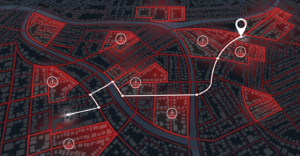
Protecting Public Safety with High-Tech Border Security
Controlling borders is vital to every country’s national interest, from managing immigration to preventing drug smuggling, human trafficking, and terrorism. The seemingly simple answer of
Controlling borders is vital to every country’s national interest, from managing immigration to preventing drug smuggling, human trafficking, and terrorism. The seemingly simple answer of physical barriers
In the coming years, AI is expected to dramatically accelerate the evolution of lawful intelligence, giving law enforcement agencies the ability to efficiently draw insight from data at unprecedented scale.
Quantum Computing may enable communications that do not travel across a network in the conventional sense and endanger traditional encryption methods, carrying critical implications for lawful intelligence.
Preventing illicit trafficking is a daunting task for border security agencies. AI-powered Computer Vision and location intelligence enhance security, reduce costs, and close surveillance gaps.
Effective lawful intelligence solutions do more than just ingest and analyze data. They build evidential narratives compelling enough for court that are backed by a fully auditable chain of custody.

Controlling borders is vital to every country’s national interest, from managing immigration to preventing drug smuggling, human trafficking, and terrorism. The seemingly simple answer of

Preventing illicit trafficking is a daunting task for border security agencies. AI-powered Computer Vision and location intelligence enhance security, reduce costs, and close surveillance gaps.

Encryption and OTT apps limit the value of lawful eavesdropping tools like wiretaps, but mobile networks offer a powerful engine for new insights: real-time geographical awareness using high-accuracy location.

The evolution of technologies, standards, and regulations gives us clues about the future but leaves room for the unexpected. This blog takes stock of new dimensions to familiar themes and some new trends.

The ecosystem involved in collecting, buying, and selling Mobile Advertising data provides a rich source of investigative data for law enforcement agencies (LEAs).

Preventing terrorism and mass casualties in the absence of full data visibility requires identifying and combining digital breadcrumbs that reveal clues and generate evidence.

The widespread presence of unauthorized mobile phones in correctional facilities continues to be a significant enforcement challenge.

The shifting landscape of communication complicates lawful intelligence with unprecedented volumes of digital traffic, obscured by encryption, across social media and other channels.

Around the world, financial hardship, political instability, and violence are persistent threats to societies. Marginalized people living under such conditions desperately wish to improve their lives.

Location intelligence is generally considered in the context of latitude and longitude, placing a device on the surface of a globe or 2D map. That does not help first responders in dense urban areas.
THE DATA SILO DILEMMA FOR LAW ENFORCEMENT
How to Ingest, Filter and Query 5G Volumes
Webinar Presented by Kevin McTiernan